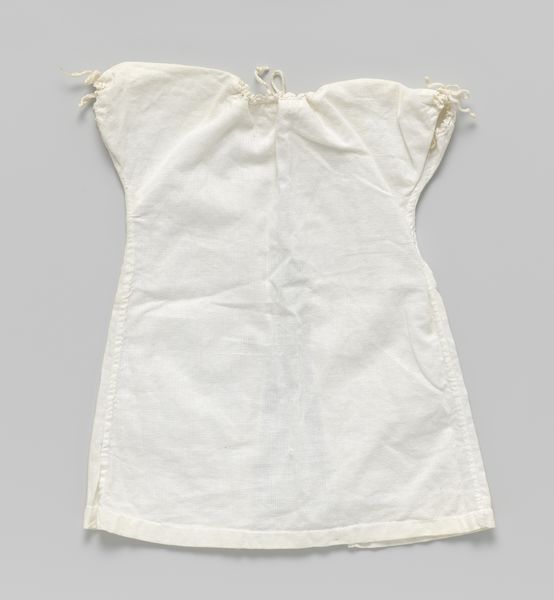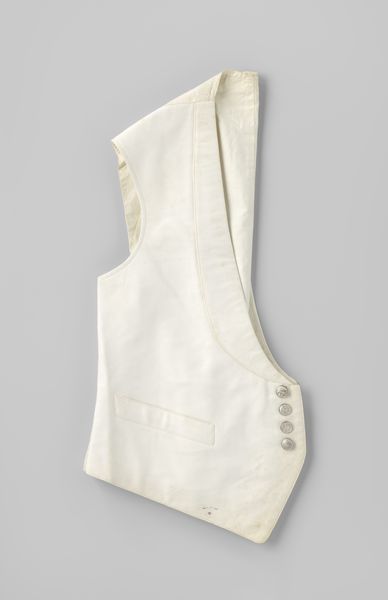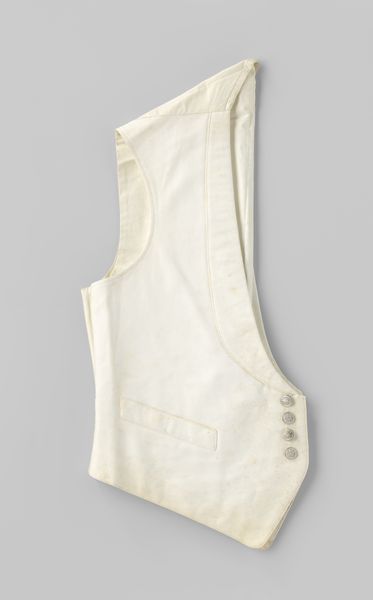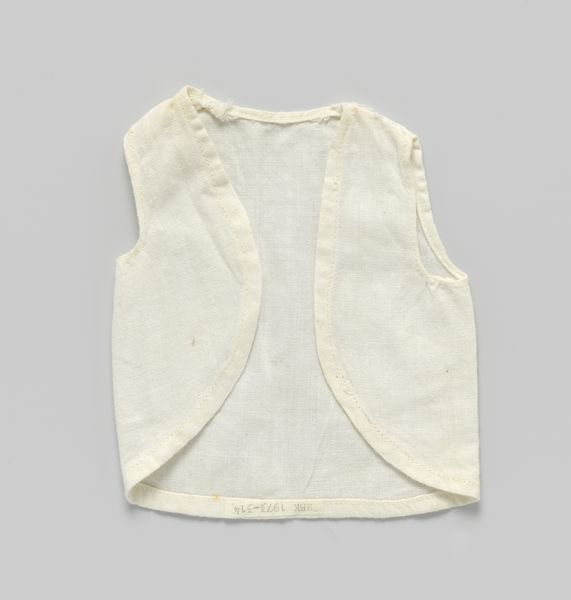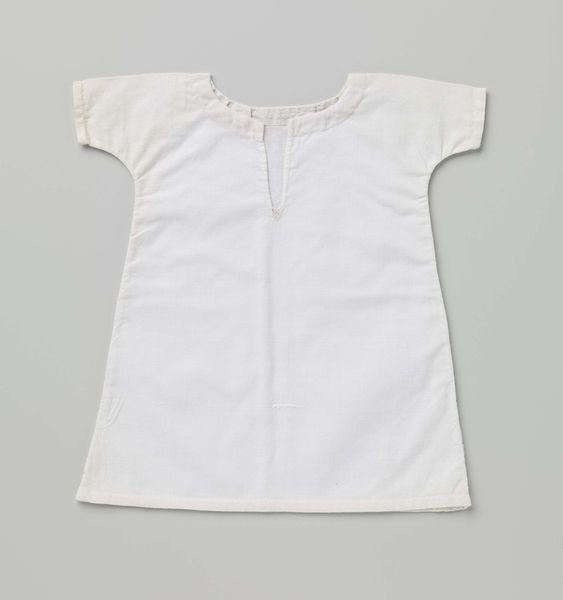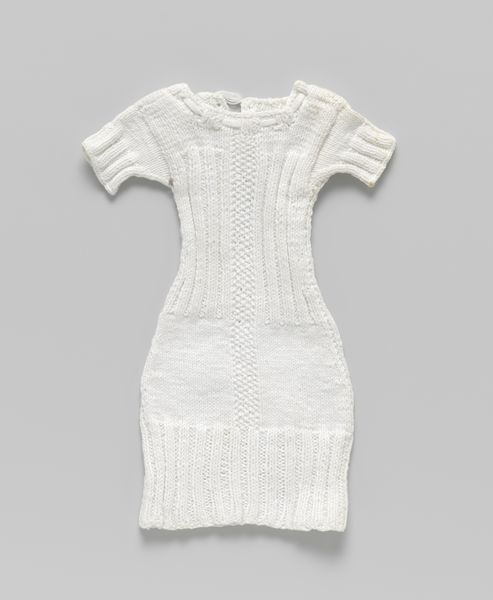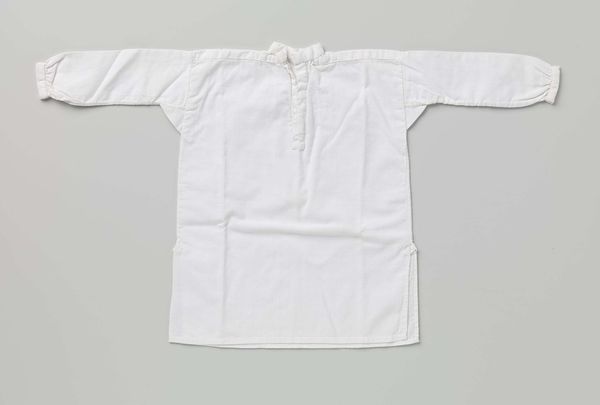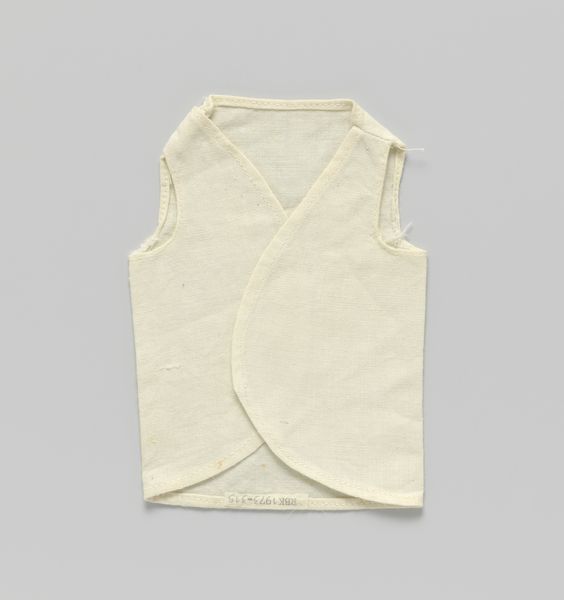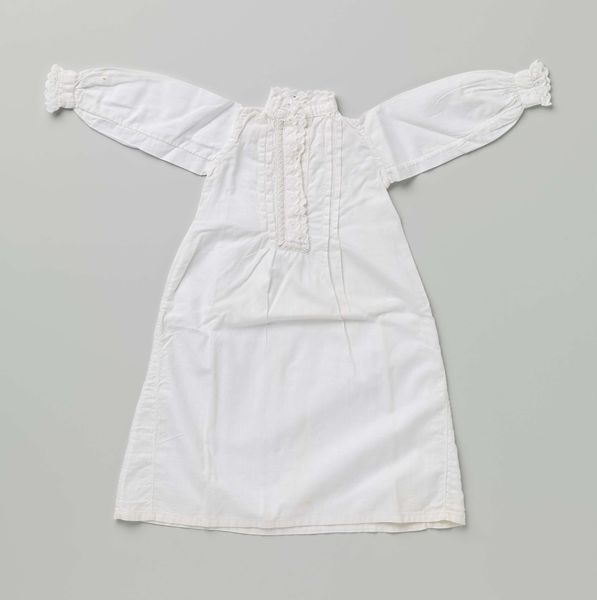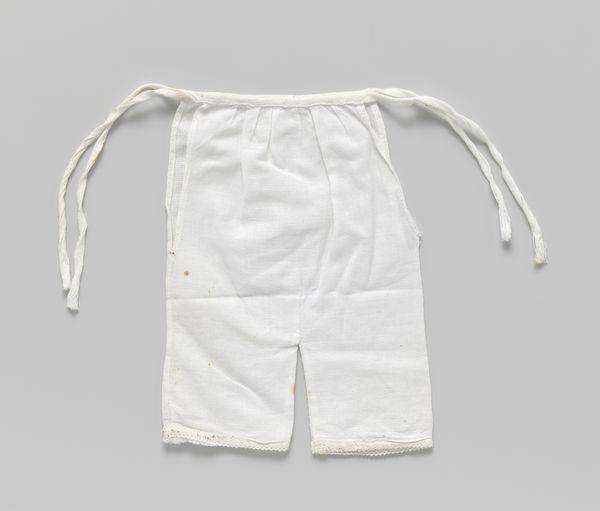
Copyright: Rijks Museum: Open Domain
Editor: Here we have "Hemd van katoen, mouwloos," a sleeveless cotton shirt, dating from around 1910 by P. Titjen-Baas. It seems so simple, almost stark. What strikes me is the... whiteness, and how the eye is drawn to the subtle textures in the cotton and the lace trim. What do you see in this piece? Curator: Well, let us consider it purely in terms of form. The composition is severely frontal, flattening the object and emphasizing its two-dimensional qualities. Note the repeated geometric shapes – the rectangular body of the shirt, juxtaposed with the delicate, curvilinear lace edging. Does the symmetry strike you? Editor: It does now that you mention it. There’s a real sense of balance, despite it just being a garment. I suppose it's a blank canvas to see different details in texture. How would you interpret the starkness of its composition and what meaning could the stark whiteness imbue the subject with? Curator: The white presents itself as pure materiality, almost resisting symbolic readings. And that flatness refuses illusionism. However, we could discuss the tension created by that starkness. Is it simply emptiness, or does the reduction allow the subtle shifts in tone and texture – the barely visible stains, the slight variations in the weave – to become potent focal points? Does the artist employ 'whiteness' to create an absolute state of plainness? Editor: I see. So it's the arrangement and relationship of these fundamental elements, rather than any deeper narrative, that makes it interesting? Is that a product of it being just a shirt? Curator: Precisely! Focus on what is presented, rather than searching for a hidden meaning. And remember, the work exists as it is and is only itself. Look at it as a unique form; nothing more, nothing less. What do we achieve by appreciating and studying that singularity? Editor: It makes me appreciate how the simplest objects, when carefully observed, can offer complex aesthetic experiences. Thank you for this insightful interpretation. Curator: Indeed. Reducing our focus allows for careful thought of artistic construction, composition, and experience.
Comments
No comments
Be the first to comment and join the conversation on the ultimate creative platform.
